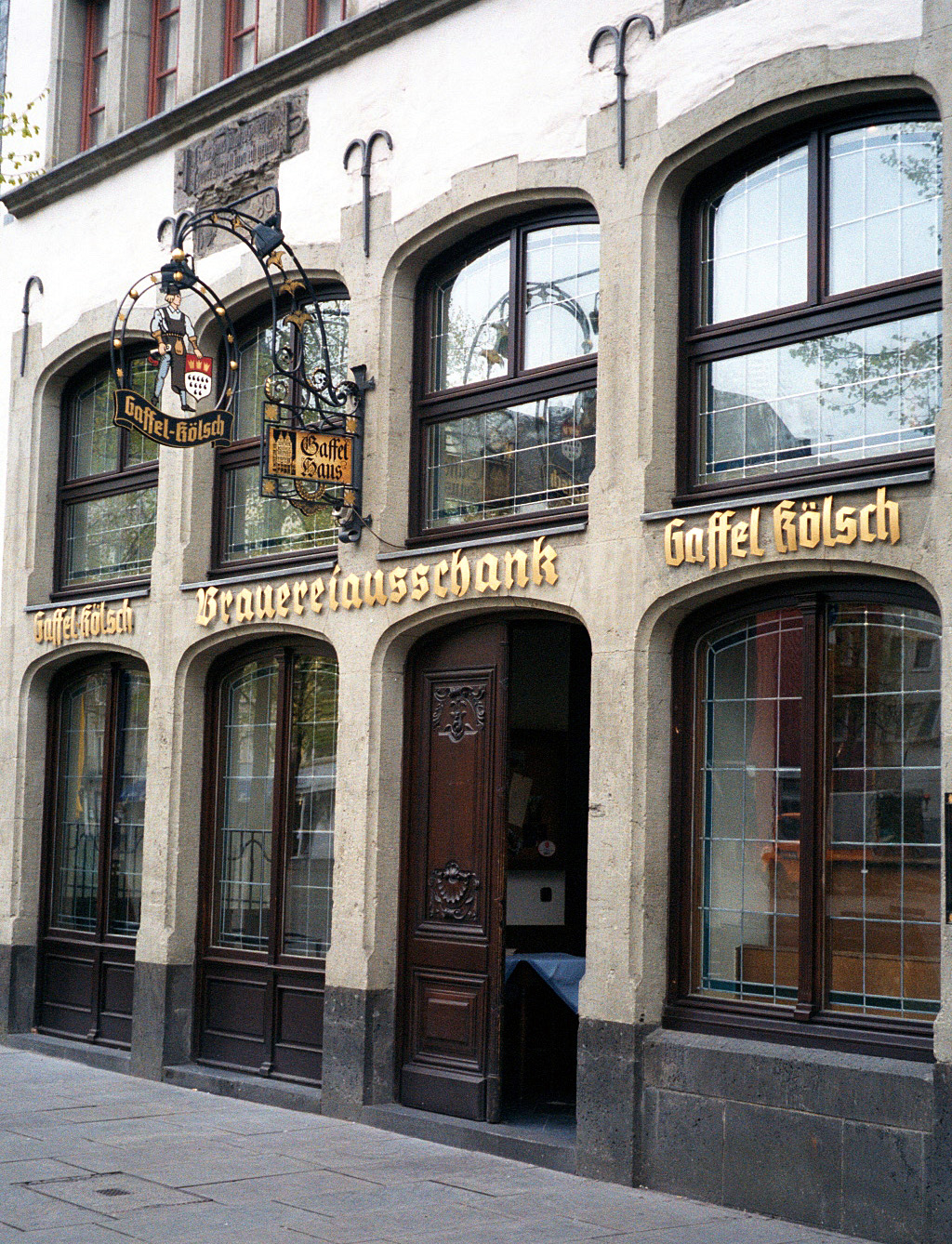Pop quiz time. Q: What does Kölsch beer have in common with Cheddar cheese, Parma ham, and Champagne? A: All of them are associated with particular place.
Kölsch is not only distinctive in its own right, but it’s also part of a distinctive and colorful beer culture.

(Maryanne Nasiatka)
In the case of Kölsch, that place is Cologne, Germany. Under the “Kölsch Convention,” a strict set of rules agreed on by the city’s brewers, Kölsch beer must be brewed in the Cologne area, fit within rigid style guidelines, and be brewed with top-fermenting yeast. The Convention even dictates how the beer should be served.
If you’ve never tried Kölsch—it’s becoming easier to find in America—it’s a straw-colored beer with a slightly fruity taste, pinpoint bubbles, and a dry finish. It might take you a little while to develop a taste for the style, but many who do develop a long-lasting friendship with it.
In Cologne, there’s an extra reason for drinking Kölsch: It’s an expression of hometown pride. Cologne has much a rich heritage that goes back some 2,000 years. In Roman times, it was known as Colonia Claudia Ara Agrippinentium was a provincial capital and administrative center. The town was given that name to honor Agrippina, the wife of Emperor Claudius.
We think of Romans as wine drinkers, but those who found themselves in Germany developed a taste for beer. They called it cervesium, a strength-giving gift from Ceres, the goddess of agriculture. When in Germany, they did as the Germans did.
Despite what your history teacher told you, the lights didn’t go out all over Europe after Rome fell. A thousand years ago, Cologne was a thriving city that was known for its trade fairs. Its residents were wealthy, at least by medieval standards: some homes even had tile kitchens and flush toilets. So much for the Dark Ages.
Cologne also has a long tradition of independence, and here’s where the brewing community comes in. In 1288, the city’s brewers joined the revolt against the Archbishop and overthrew him—no mean feat in those days. Cologne’s brewing community has been close-knit ever since.
According to the city’s museum, Kölsch beer as we know it dates back to the 19th century, when it displaced wine as the municipal beverage. Todays it’s as essential a part of Cologne life as the Kölner Dom, the massive cathedral in the center of town, the pre-Lenten Karneval, and the fragrance we call cologne.
People are as loyal to their favorite brand of Kölsch as Americans are to their favorite football team. Local doctors have even recommended the beer as an agent for cleaning one’s internal organs–a health claim that would get a brewery in big trouble over here.
Cologne and its arch-rival to the north, Düsseldorf, are among the few places on the Continent that held out against the invasion of lager. That said, Kölsch brewers were forced to adopt some lager-making techniques, including aging it for weeks at low temperatures–which accounts for Kölsch’s clear appearance and crisp flavor.
Cologners might have gravitated to more conventional styles had Allied air raids not left most of their city in ruins by the end of World War II. The city’s brewers, only 21 of which survived the war, rallied to the occasion and rebuilt their industry around the city’s traditional beer. To keep that beer from being watered down or made with cheap ingredients, they agreed to the Kölsch Convention.











